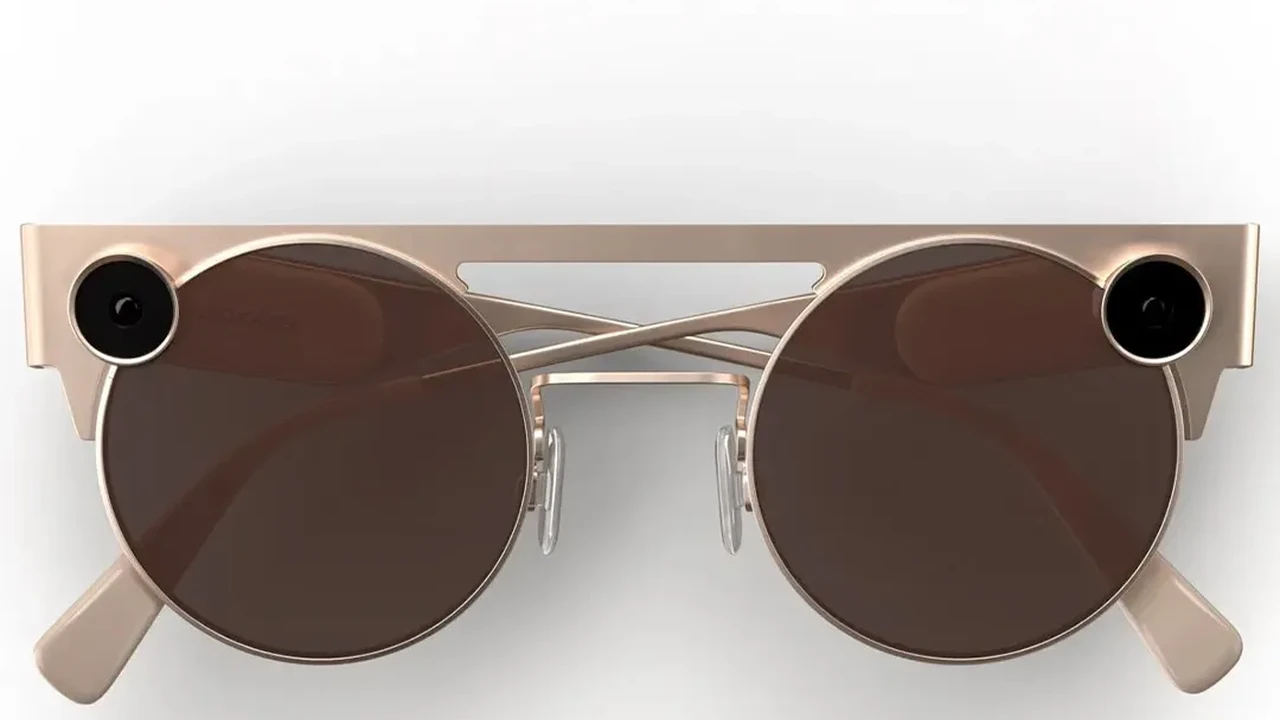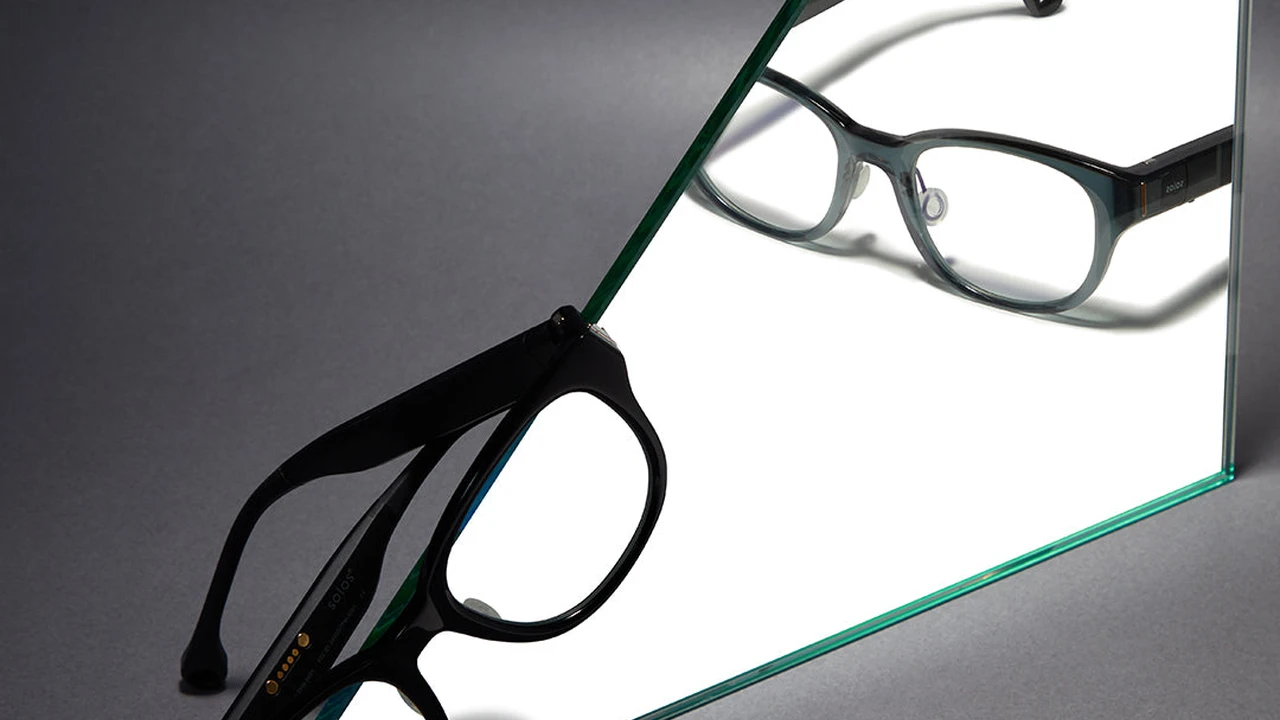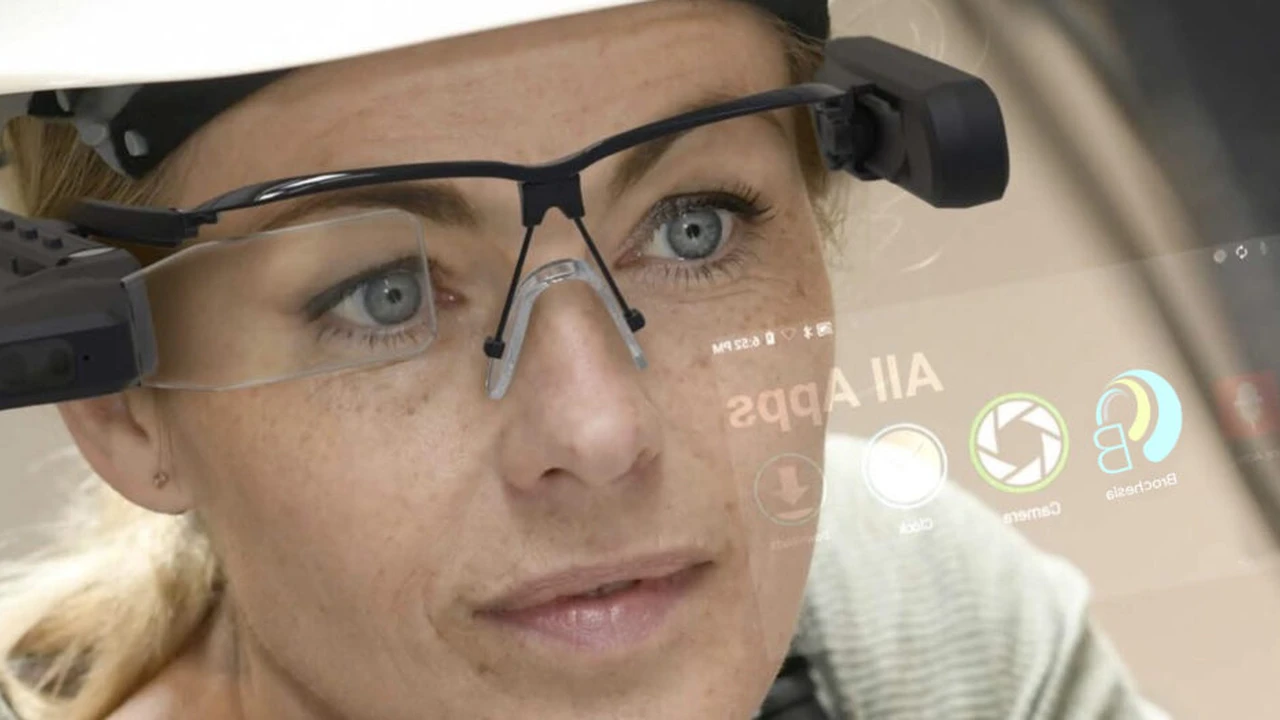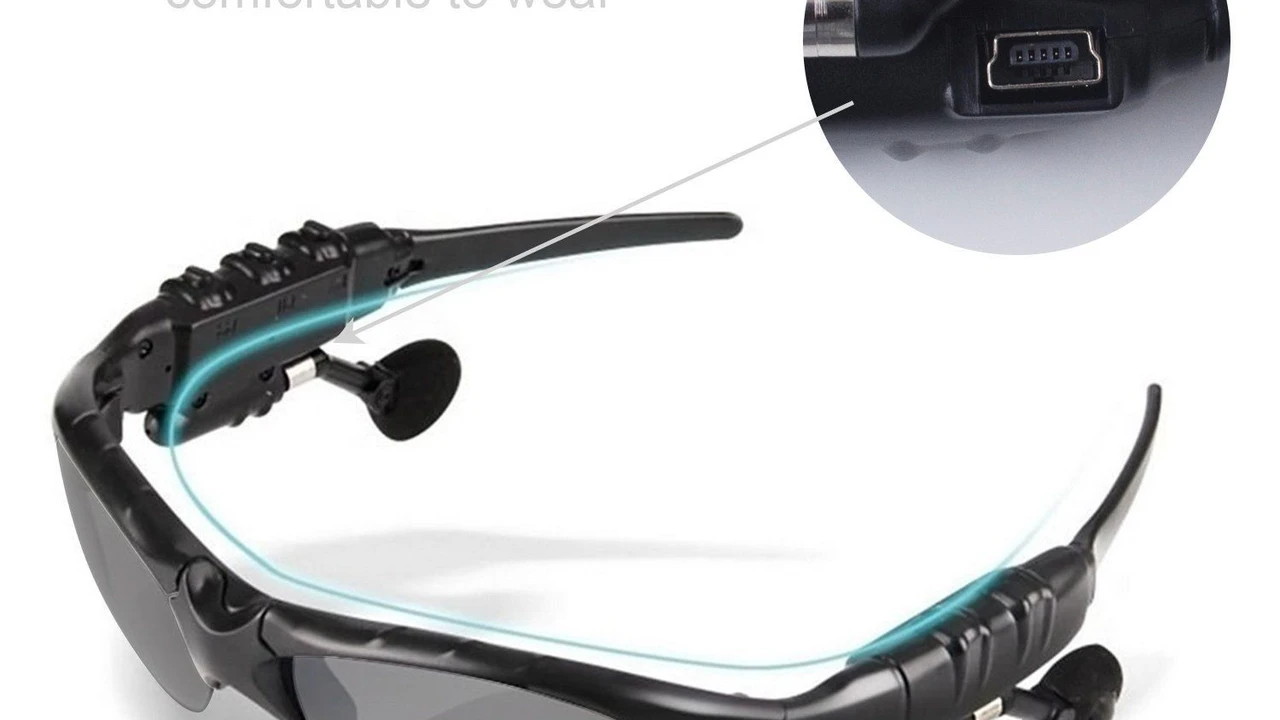Smart Glasses for Photography and Videography New Perspectives
Capture unique perspectives with smart glasses for hands-free photography and videography.

Smart Glasses for Photography and Videography New Perspectives
Smart glasses are revolutionizing the way we capture images and videos, offering a hands-free, first-person perspective that traditional cameras cannot match. This article delves into the world of smart glasses for photography and videography, exploring their benefits, key features to look for, popular models, and practical use cases. Whether you're a casual user looking to document daily life or a professional seeking innovative content creation tools, smart glasses offer a compelling new approach.
The Appeal of Hands-Free Capture Smart Glasses Benefits for Content Creation
The primary allure of smart glasses for photography and videography lies in their hands-free operation. This allows users to remain fully immersed in the moment while still capturing high-quality content. Think about it: you're hiking a challenging trail, your hands are busy navigating, but you want to record the breathtaking scenery. With smart glasses, it's effortless. This hands-free capability extends to a multitude of scenarios, from cooking demonstrations to extreme sports, where holding a traditional camera would be impractical or even dangerous. Beyond convenience, smart glasses offer a unique first-person perspective, literally showing the world through your eyes. This creates incredibly engaging and authentic content, perfect for vlogging, social media, or simply reliving memories. The discreet nature of many smart glasses also means less intrusion, allowing for more natural and candid shots. You're not pointing a bulky camera at someone; you're simply wearing your glasses, making subjects more comfortable and less self-conscious. This can lead to more genuine interactions and more compelling visual narratives. Furthermore, many smart glasses integrate seamlessly with your smartphone, allowing for instant sharing and editing, making the content creation workflow incredibly efficient. The ability to capture and share in real-time is a significant advantage in today's fast-paced digital world.
Key Features to Look For Essential Smart Glasses Specifications for Visuals
When considering smart glasses for photography and videography, several key features are paramount. The camera's resolution is, of course, a major factor. Higher megapixels for photos and higher resolution (like 1080p or 4K) for video will result in sharper, more detailed images. However, it's not just about raw numbers; sensor size and image processing capabilities also play a crucial role in low-light performance and overall image quality. Look for smart glasses with good dynamic range to handle varying light conditions. Field of view (FOV) is another important consideration. A wider FOV will capture more of your surroundings, which is great for immersive videos, while a narrower FOV might be better for focusing on specific subjects. Image stabilization, whether optical (OIS) or electronic (EIS), is essential for smooth, shake-free video, especially when you're on the move. Nobody wants to watch shaky footage! Battery life is also critical. Recording video can be power-intensive, so a longer battery life means more capture time without needing to recharge. Storage capacity, either internal or expandable via a microSD card, determines how much content you can save before needing to offload it. Connectivity options like Wi-Fi and Bluetooth are vital for transferring files and connecting to companion apps. Finally, consider the design and comfort. You'll be wearing these on your face, so they need to be lightweight, comfortable, and ideally, stylish enough that you'll actually want to wear them regularly. Some smart glasses also offer water resistance, which is a huge plus for outdoor adventures or unexpected weather.
Top Smart Glasses for Photography and Videography Product Recommendations and Comparisons
Let's dive into some of the leading smart glasses models that excel in photography and videography, comparing their features, use cases, and approximate pricing. Keep in mind that prices can fluctuate, and new models are constantly emerging.
Ray-Ban Stories Smart Glasses for Everyday Capture and Social Sharing
Overview: Developed in collaboration with Meta (formerly Facebook), Ray-Ban Stories are designed for casual, everyday capture and seamless sharing to social media. They prioritize style and ease of use, looking almost identical to classic Ray-Ban Wayfarer or Round frames. They feature dual 5MP cameras, discreetly placed on either side of the frame, capable of capturing photos and up to 60-second videos. Audio is captured via three built-in microphones, and there are open-ear speakers for listening to music or taking calls. The companion app, Meta View, allows for easy organization, editing, and sharing of content.
Key Features:
- Dual 5MP cameras for photos and 60-second videos.
- Integrated open-ear speakers and 3-microphone array.
- Touch controls on the temple for capture and playback.
- LED indicator for privacy (lights up when recording).
- Meta View app for content management and sharing.
- Stylish Ray-Ban designs (Wayfarer, Round, Meteor).
Use Cases: Perfect for capturing candid moments with friends and family, vlogging daily life, documenting travel experiences, or creating short, shareable clips for platforms like Instagram and TikTok. Their discreet design makes them ideal for social settings where a traditional camera might feel intrusive.
Pros: Excellent design and comfort, very easy to use, seamless social media integration, good audio quality for calls and music. The first-person perspective is great for vlogging.
Cons: Limited video recording length (60 seconds), camera resolution is modest compared to smartphones, no optical image stabilization, battery life can be a concern for extended recording sessions.
Approximate Price: Starting around $299 USD.
Amazon Echo Frames Smart Audio Glasses with Camera Integration
Overview: While primarily focused on audio and Alexa integration, the latest generation of Amazon Echo Frames (specifically the 3rd Gen) have started to incorporate camera capabilities, making them a contender for hands-free capture. They are designed to be lightweight and comfortable, blending into everyday eyewear. The camera functionality is more about quick snaps and short clips rather than extensive videography, but it adds a new dimension to their utility.
Key Features:
- Integrated camera (specific resolution varies by generation, but generally for quick snaps).
- Open-ear audio for music and calls.
- Alexa voice assistant integration.
- Lightweight and comfortable design.
- Customizable lenses (prescription compatible).
Use Cases: Ideal for users who want the convenience of Alexa on the go, combined with the ability to quickly capture a photo or short video without pulling out their phone. Great for hands-free communication and quick visual notes.
Pros: Excellent Alexa integration, comfortable for all-day wear, good audio quality, discreet design. The camera adds a useful quick-capture feature.
Cons: Camera capabilities are not as advanced as dedicated smart glasses for photography, primarily an audio device with added visual capture, battery life can be a limiting factor for heavy camera use.
Approximate Price: Starting around $269 USD.
Snap Spectacles Advanced AR Smart Glasses for Creative Content
Overview: Snap Spectacles have evolved significantly, with the latest iterations (like Spectacles 3 and the AR Spectacles for developers) pushing the boundaries of creative capture. Spectacles 3 features dual HD cameras for capturing 3D photos and videos, allowing for unique depth effects. The developer-focused AR Spectacles take this even further, integrating augmented reality overlays directly into your field of view, opening up entirely new forms of interactive content creation.
Key Features (Spectacles 3):
- Dual HD cameras for 3D photos and videos.
- Circular photo and video formats.
- Integrated microphones.
- Charging case for on-the-go power.
- Snapchat integration for sharing and AR effects.
Key Features (AR Spectacles - Developer Edition):
- Waveguide display for AR overlays.
- Multiple cameras for environmental understanding and tracking.
- Advanced sensors for spatial computing.
- Designed for creating and experiencing AR content.
Use Cases: Spectacles 3 are great for creative individuals looking to experiment with 3D capture and unique visual effects for social media. The AR Spectacles are for developers and creators pushing the boundaries of augmented reality content, from interactive art to immersive storytelling.
Pros: Innovative 3D capture (Spectacles 3), cutting-edge AR capabilities (AR Spectacles), strong integration with Snapchat's creative tools, unique visual style.
Cons: Spectacles 3 are more of a niche product for 3D content, AR Spectacles are currently developer-focused and not widely available to consumers, battery life can be limited, design might not appeal to everyone.
Approximate Price: Spectacles 3 around $380 USD. AR Spectacles are not commercially available for general purchase; they are distributed to developers.
Vuzix Smart Glasses Industrial and Professional Visual Capture
Overview: Vuzix offers a range of smart glasses primarily aimed at enterprise and industrial applications, but their robust camera capabilities make them relevant for professional visual capture in specific fields. Models like the Vuzix Blade and Vuzix M400/M4000 feature high-resolution cameras designed for documentation, remote assistance, and quality control in demanding environments. They are built for durability and extended use.
Key Features (Vuzix Blade 2):
- 8MP autofocus camera for photos and 1080p video.
- Waveguide display for information overlay.
- Android OS for app development.
- Rugged design for industrial use.
- Voice control and touch pad.
Key Features (Vuzix M400/M4000):
- 12.8MP camera with autofocus and optical image stabilization (M4000).
- 4K video recording (M4000).
- Qualcomm Snapdragon XR1 processor for powerful performance.
- Hot-swappable batteries for extended use.
- Designed for harsh environments.
Use Cases: Ideal for professionals in fields like manufacturing, healthcare, field service, and logistics who need to document processes, conduct remote inspections, or provide visual guidance. Also suitable for specialized content creators who require robust, hands-free capture in challenging conditions.
Pros: High-resolution cameras, excellent image stabilization (on some models), durable and rugged designs, long battery life with hot-swappable options, powerful processors for demanding applications.
Cons: Higher price point, design is more utilitarian than stylish, primarily aimed at enterprise users, not consumer-friendly for casual use.
Approximate Price: Vuzix Blade 2 around $999 USD. Vuzix M400/M4000 can range from $1,500 to $2,500+ USD depending on configuration.
Nreal Air Smart Glasses Immersive Display with Capture Potential
Overview: While Nreal Air smart glasses are primarily known for their immersive display, offering a 'virtual screen' experience for media consumption and gaming, they also have a front-facing camera. This camera is mainly used for spatial tracking and environmental understanding for AR applications, but it also has the potential for basic photo and video capture, especially when paired with compatible devices and apps. Their strength lies in combining a large virtual display with some level of environmental interaction.
Key Features:
- Micro-OLED display for a large virtual screen experience.
- Front-facing camera for spatial tracking and potential capture.
- Lightweight and comfortable design.
- Connects to smartphones, tablets, and computers via USB-C.
Use Cases: Primarily for consuming media on a large virtual screen, cloud gaming, and productivity. The camera can be used for basic environmental capture or for AR applications that require understanding the real world. Not a primary device for high-quality photography/videography, but offers a unique blend of features.
Pros: Excellent immersive display, comfortable for extended wear, versatile connectivity, good for media consumption and light productivity.
Cons: Camera is not the primary focus and has limited capabilities for high-quality photo/video, requires a connected device to function, battery life depends on the connected device.
Approximate Price: Around $379 USD.
Practical Applications and Creative Use Cases Smart Glasses in Action
The applications for smart glasses in photography and videography are incredibly diverse. For everyday users, they are fantastic for capturing those spontaneous, unposed moments that often get missed when fumbling for a phone. Imagine recording your child's first steps from your perspective, or a hilarious interaction with a pet, all while your hands are free to engage. For travel enthusiasts, smart glasses offer a unique way to document adventures, from hiking trails to bustling markets, providing an immersive 'point-of-view' that truly transports viewers. Vlogging becomes incredibly natural and engaging when you're looking directly at your audience through your glasses. For sports and action enthusiasts, smart glasses are a game-changer. Cyclists can record their rides, skiers can capture their runs, and climbers can document their ascents, all without bulky cameras interfering with their activity. The first-person perspective adds an unparalleled level of excitement and immersion to action footage. In professional settings, smart glasses are invaluable for documentation and training. Field technicians can record repairs for quality assurance or to create training materials. Surgeons can record procedures for educational purposes. Architects can document site visits with visual notes. Journalists can capture interviews and events discreetly. The ability to overlay information onto the real world (with AR-capable glasses) also opens up possibilities for interactive visual storytelling, where digital elements can be integrated into real-world footage. Think about creating a virtual tour where information pops up as you look at different landmarks, or an interactive product demonstration where features are highlighted in real-time. The potential for innovative content creation is truly limitless.
Challenges and Considerations Navigating the Smart Glasses Landscape
While smart glasses offer exciting possibilities for photography and videography, there are also challenges and considerations to keep in mind. Privacy is a significant concern. The ability to discreetly record others raises ethical questions, and it's crucial for users to be mindful and respectful of privacy laws and social norms. Many smart glasses include a visible indicator (like an LED light) when recording to address this, but user responsibility remains paramount. Battery life is another common hurdle. Recording high-quality video is power-intensive, and current smart glasses often have limited battery life compared to dedicated cameras or smartphones. This means carrying a charging case or power bank might be necessary for extended sessions. Image quality, while improving, may not always match that of high-end smartphones or dedicated cameras, especially in challenging lighting conditions. Smart glasses are designed for convenience and a unique perspective, not necessarily for professional-grade cinematic output (though some high-end enterprise models are closing this gap). Data storage can also be an issue, as video files can quickly fill up internal memory. Regular offloading of content is often required. Finally, the 'social acceptance' of wearing smart glasses with cameras is still evolving. While some models are very discreet, others are more noticeable, and public perception can vary. As the technology becomes more widespread and integrated into everyday life, these challenges are likely to diminish, but they are important to acknowledge for early adopters.
The Future of Visual Capture How Smart Glasses Will Evolve
The trajectory of smart glasses for photography and videography is incredibly promising. We can expect significant advancements in camera technology, with higher resolutions, improved low-light performance, and more sophisticated image stabilization becoming standard. Battery life will undoubtedly improve, allowing for longer recording times. The integration of artificial intelligence will play a crucial role, enabling features like intelligent scene recognition, automatic editing, and even real-time content generation based on what you're seeing. Imagine smart glasses that can automatically identify and tag objects or people in your videos, or even suggest optimal shooting settings based on the environment. Augmented reality capabilities will become more sophisticated, allowing for seamless blending of digital information with real-world footage, opening up new avenues for interactive storytelling and content creation. We'll see more seamless integration with cloud services for instant backup and sharing, and perhaps even direct streaming capabilities. Design will continue to evolve, making smart glasses even more stylish, lightweight, and indistinguishable from regular eyewear. As the technology matures and becomes more affordable, smart glasses will likely become a ubiquitous tool for visual capture, fundamentally changing how we document and share our experiences. The future of photography and videography is hands-free, immersive, and incredibly personal, all thanks to the ongoing evolution of smart glasses.
:max_bytes(150000):strip_icc()/277019-baked-pork-chops-with-cream-of-mushroom-soup-DDMFS-beauty-4x3-BG-7505-5762b731cf30447d9cbbbbbf387beafa.jpg)





